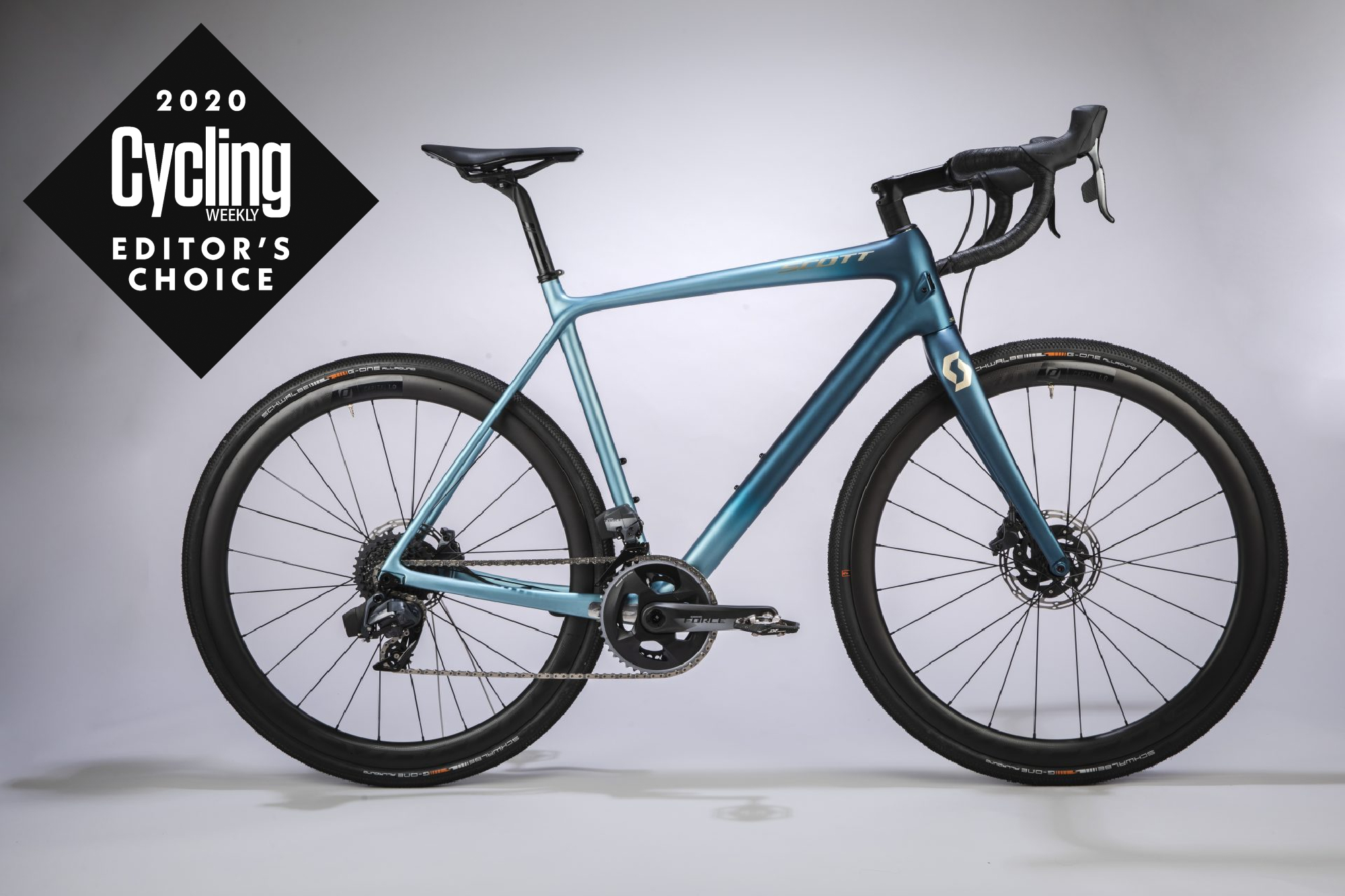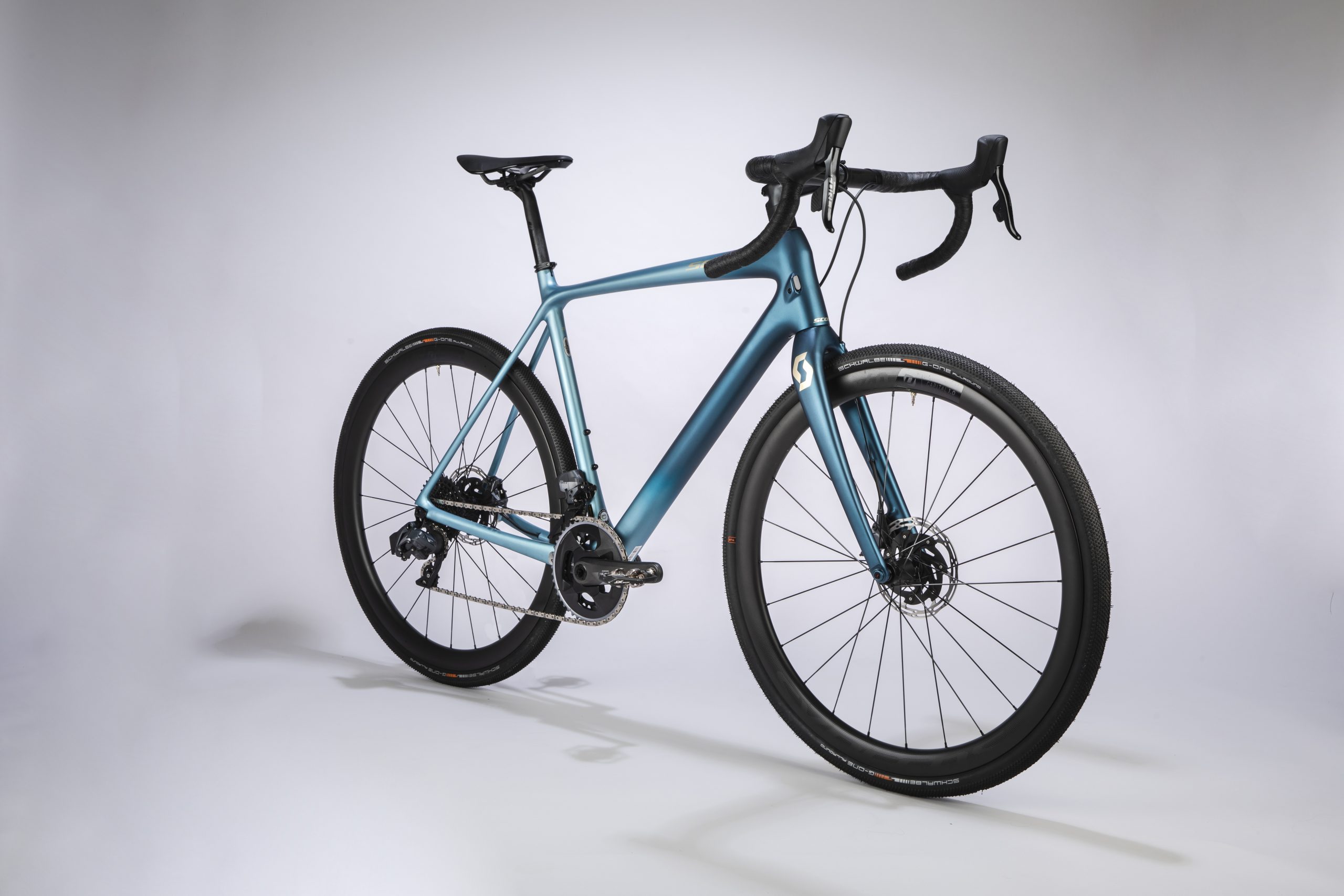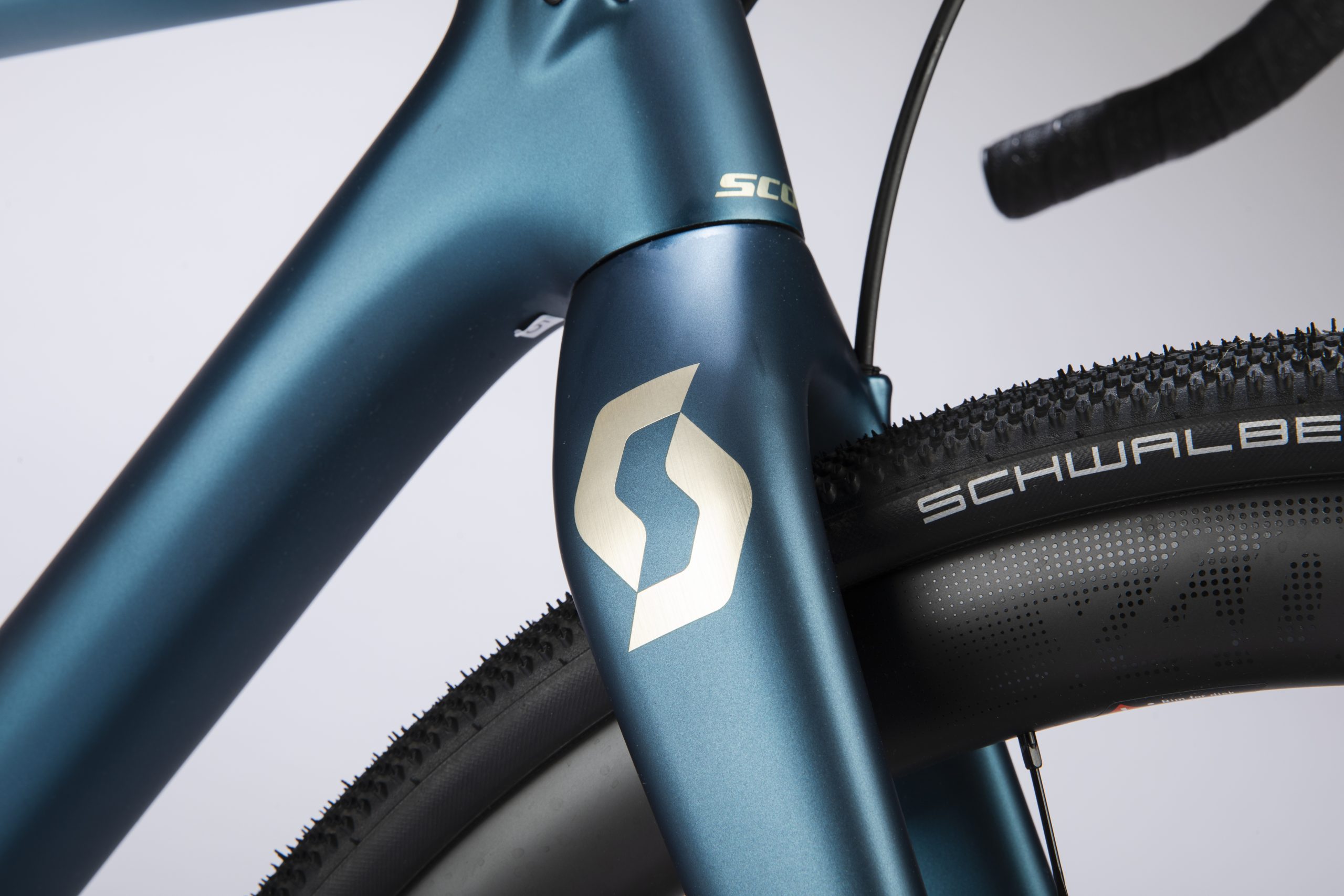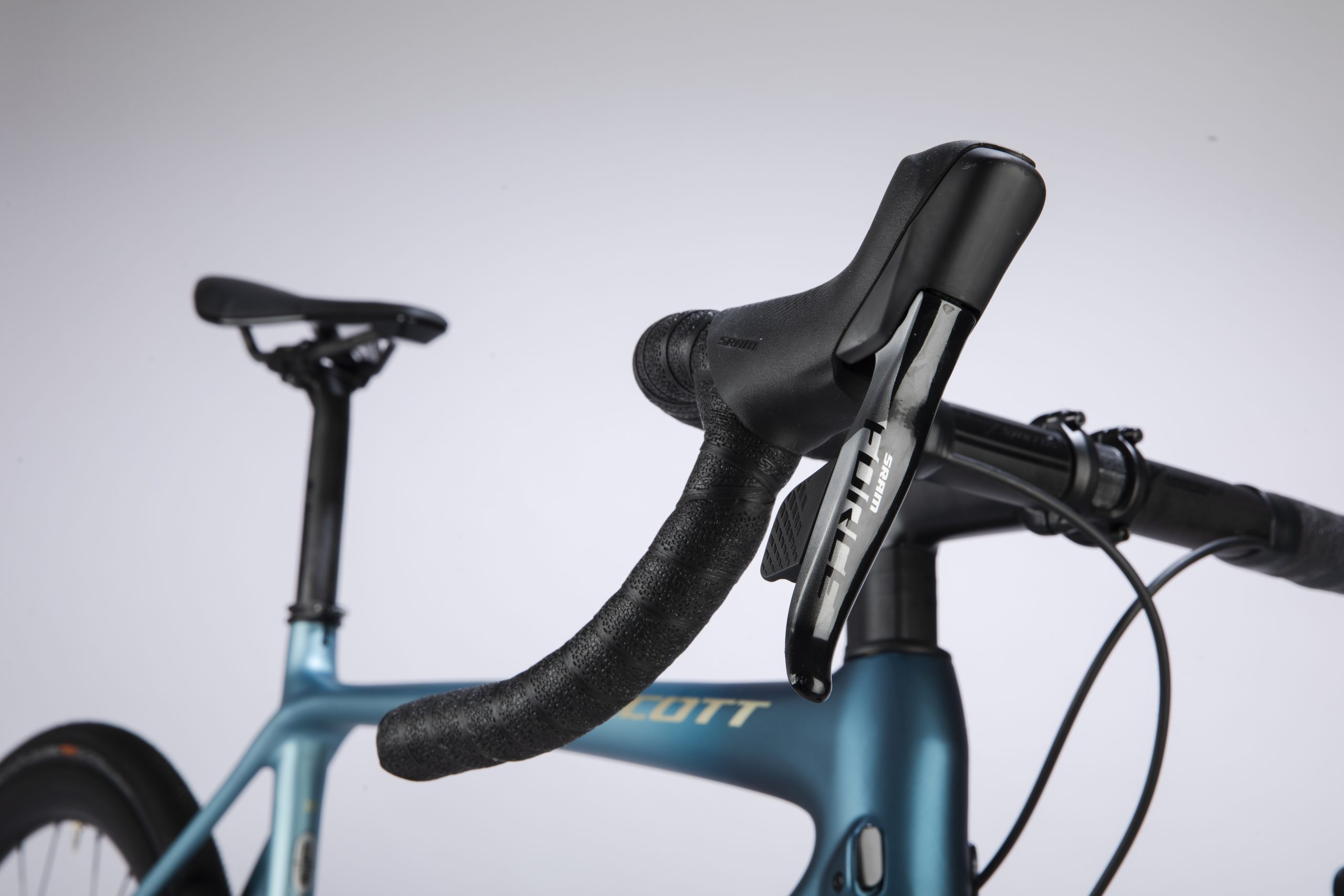Scott Addict Gravel 10 review
Cycling Weekly Editor Simon Richardson found the Scott Addict Gravel gave him a whole new appreciation for his local area

As much as I loved riding this bike around my local bridleways, a full carbon Addict frame with deep section carbon rims is just begging to be raced. I went out and got a few off-road KOM’s but I’d have liked to have pushed it a bit more. It was a little over-specced for the riding I did and if you don’t need an out and out race bike, or if you’d be wincing when hearing stones flick up and ding the underside of the down tube, you might want to go for a lower spec machine. But if you want Scott’s best you’ll enjoy the ride on steeper paths and having something so responsive in those instances when you have to kick on the pedals just to maintain momentum and avoid toppling off to the side. As a gravel racer, it’s a great bike, with a great spec. You’ll have to wait a while to race it, in the mean time enjoy hitting those hills out in the countryside.
-
+
Responsiveness ideal for steep off-road climbs
-
+
Nice ride position on tops
-
+
Bullet proof rims
-
-
Very costly for a bike that takes a battering off-road
-
-
Bars very stretched out
You can trust Cycling Weekly.

The Scott Addict Gravel 10 was selected for an Editor's Choice award in 2020. This year's list contains 78 items which scored a 9 or 10/10 with our tech team - this gear is the best of the best, and has received the Cycling Weekly stamp of approval.
There was some expectation that the gravel race scene would grow significantly in 2020. With some successful events in 2019, ever more coverage in the media and plans for the UCI to hold the inaugural World Championships it looked like the genre was set to take a giant leap. Then the Corona pandemic hit.
I'm highlighting this as the Scott Addict Gravel 10 is an out and out race bike, and any potential owners will likely want to pin a number on. Sadly they’ll have to wait at least another year to do that and in the meantime find other ways to put this bike through it’s paces.
The full carbon pearlescent purple frame is part of Scott’s top-of-the-range Addict family that we’re used to seeing on the road and in the WorldTour under the Mitchleton Scott riders. It's made with their highest grade carbon, named HMX, and the emphasis is on low weight and rigidity. From an aesthetic point of view the Addict road and gravel frames are quite different. There are no dropped seat stays on the gravel addict, while many of the tubes are as chunky as a mtb. Especially those full carbon straight drop forks.

This model comes with a SRAM Force eTap AXS HRD groupset, Syncros deep section wheels and components and finished with a set of Schwalbe G-One 35mm tyres. It’s virtually an aero build and, aside from the knobbly tyres, feels as responsive as my road bike in all conditions – which is why it’s calling out to be raced.
>>> Why are road cyclists riding gravel bikes when hardtails could be faster?
Everyone’s budget is different and you can spend what you want on a bike, but at a penny under £5k, and with this build, it does pigeon hole it somewhat. But it's a top of the range bike, not one for the masses.
Gravel bikes are generally great for messing around on, exploring new routes and gentle rides on bridleways. The last one I tested was a £1,600 Boardman ADV 9.0 and I found it just as much fun, and probably a little more practical, whereas the Scott is too good for heading to the shops or going for a ride with the kids.
So the potential customers may be limited, but at this price and spec it’s not a bike Scott will be looking to sell hundreds of, if that's what you're after check out their Speedster gravel bikes.
But it leaves me with a dilemma. How to test a race-ready gravel bike when I can’t race it? I found myself comparing it to the previous mid range Boardman gravel bike I’d ridden, but also to my road going Dogma, whilst also considering the handling and other standard performance metrics.

First off the full carbon frame. It’s a beauty. It’s hard to judge the capabilities of such a frame when riding 35mm tyres with 35-40psi in as they cushion the ride so well. Pump them up however and you’ve got a very stiff bike beneath you. Too stiff in fact for the hard-packed bumpy bridleways, especially with those bullet-proof, carbon syncros Capital 1.0 40mm wheels that banged through some pretty big holes during the test.
Where the frame really comes in to it’s own is climbing. The best comparisons here are with mountain bikes. Anyone who’s done some mtbing will be familiar with those loose, uneven, steep climbs where you’re twiddling a tiny gear and going nowhere. God I hate those climbs.
On this bike on those climbs you do feel like you’re getting somewhere. And on those occasions when you have to accelerate to regain momentum or get over a root or step, the reaction is instant, surging you forwards and on up the climb. On smooth tarmac climbs it feels like just like a road bike. In fact, put some slick 28 or 32mm tyres on and it would perform as well as most race bikes. This for me was the frames real strength. It was surprising just how well a lightweight bike, with a good position responded on those climbs and made me hate them a whole lot less. Full marks.
The 700c wheels complement the frame and add to the race pedigree. For 90% of my routes, I didn’t feel like I needed a set of deep section carbon rims, but they’re light, responsive and survived some real batterings.
I do my best to go round the craters you tend to find on bridleways, but riding through dappled light under tree cover it’s sometimes impossible to avoid them. Especially when trying to social distance with some walkers coming the other way.
The two really big bangs I encountered left me with pinch punctures when riding at about 35 psi. After happening twice in two rides I decided to put another 5 psi in them and I didn’t puncture again. The Schwalbe G-ones are tubeless ready, but came with inner-tubes (again because it was a show bike). Buy this bike and it will come tubeless meaning you can drop that psi down even further and get better grip with minimal risk of puncturing.
Thankfully getting a tube in wasn’t as difficult as with many tubeless rim and tyre combinations. The Scwalbe's could be taken off and put back on by hand. Just remember you need long valve tubes or valve extenders when you head out.
The Syncros wheels accelerate well, complimenting the frame and on long flat stretches of road it was easy to get this bike up to speed and hold it there.

Riding on the tops was a delight; a nice short-reach, upright position giving loads of control. But on the hoods, where I do like to ride, I was too far stretched out. Almost the same as my road bike.
When perched on top of the bars the bike’s geometry gives a nice high, upright ride position. Excellent for control and comfort as well as visibility when in traffic. The bottom bracket sits 28.2 off the ground (1.1cm higher than my road bike) while the standover height (at the centre point at the top of the head tube) is 85cm, 4.5cm higher than my road bike. The handlebars sat 4cm higher than the bars on my road bike with 4.5cm less reach from the front of my saddle.

The Syncros Creston 1.0 Flare bars measured 44cm (centre to centre) at the point just behind the brake hoods and 50cm at the bar end plugs. Very wide, but this gives space for a bar bag. The own-brand seat pin and saddle were also more than good enough, the only surprise being a traditional seatpin clamp. On a frame this good I’d expect that to be neatly built in to the frame as per all other top of the range road bikes.
But there are a couple of really neat additions to this bike that I hadn't seen before. The cable guides on the headtube are neatly labeled with RD, FD and RB - read derailleur, front derailleur and rear brake. Not sure what exists inside the frame, but getting these right when pushing the cables through can save a lot of frustration later on. There's also a hard, plastic domed plug that sits millimetres below the cage of the front mech which will prevent the chain bouncing off the inner chain-ring. That along with the clutch rear mech means you should never have to worry about your chain jumping off and getting tangled up at a crucial moment in that race that this bike is itching to be part of.
The SRAM Force eTap AXS groupset specced has fast become popular among gravel riders. A two-by set up might not be your initial first choice, but the electronic shifting is so smooth that it still work underload, and having the 46/33 chainset meant I could achieve desired cadence on the road most of the time, too.
So to anyone picking up one of these in the next year or so. I look forward to seeing you on a start line some time in the future.

Thank you for reading 20 articles this month* Join now for unlimited access
Enjoy your first month for just £1 / $1 / €1
*Read 5 free articles per month without a subscription

Join now for unlimited access
Try first month for just £1 / $1 / €1
Get The Leadout Newsletter
The latest race content, interviews, features, reviews and expert buying guides, direct to your inbox!

Editor of Cycling Weekly magazine, Simon has been working at the title since 2001. He fell in love with cycling 1989 when watching the Tour de France on Channel 4, started racing in 1995 and in 2000 he spent one season racing in Belgium. During his time at CW (and Cycle Sport magazine) he has written product reviews, fitness features, pro interviews, race coverage and news. He has covered the Tour de France more times than he can remember along with two Olympic Games and many other international and UK domestic races. He became the 130-year-old magazine's 13th editor in 2015.
-
 Man hands himself in to Belgian police after throwing full water bottle at Mathieu van der Poel during Paris-Roubaix
Man hands himself in to Belgian police after throwing full water bottle at Mathieu van der Poel during Paris-Roubaix30-year-old was on Templeuve-en-Pévèle cobbled sector when television pictures showed the bottle hitting him in the face
By Tom Thewlis Published
-
 'I'll take a top 10, that's alright in the end' - Fred Wright finishes best of British at Paris-Roubaix
'I'll take a top 10, that's alright in the end' - Fred Wright finishes best of British at Paris-RoubaixBahrain-Victorious rider came back from a mechanical on the Arenberg to place ninth
By Adam Becket Published
-
 'This is the furthest ride I've actually ever done' - Matthew Brennan lights up Paris-Roubaix at 19 years old
'This is the furthest ride I've actually ever done' - Matthew Brennan lights up Paris-Roubaix at 19 years oldThe day's youngest rider reflects on 'killer' Monument debut
By Tom Davidson Published